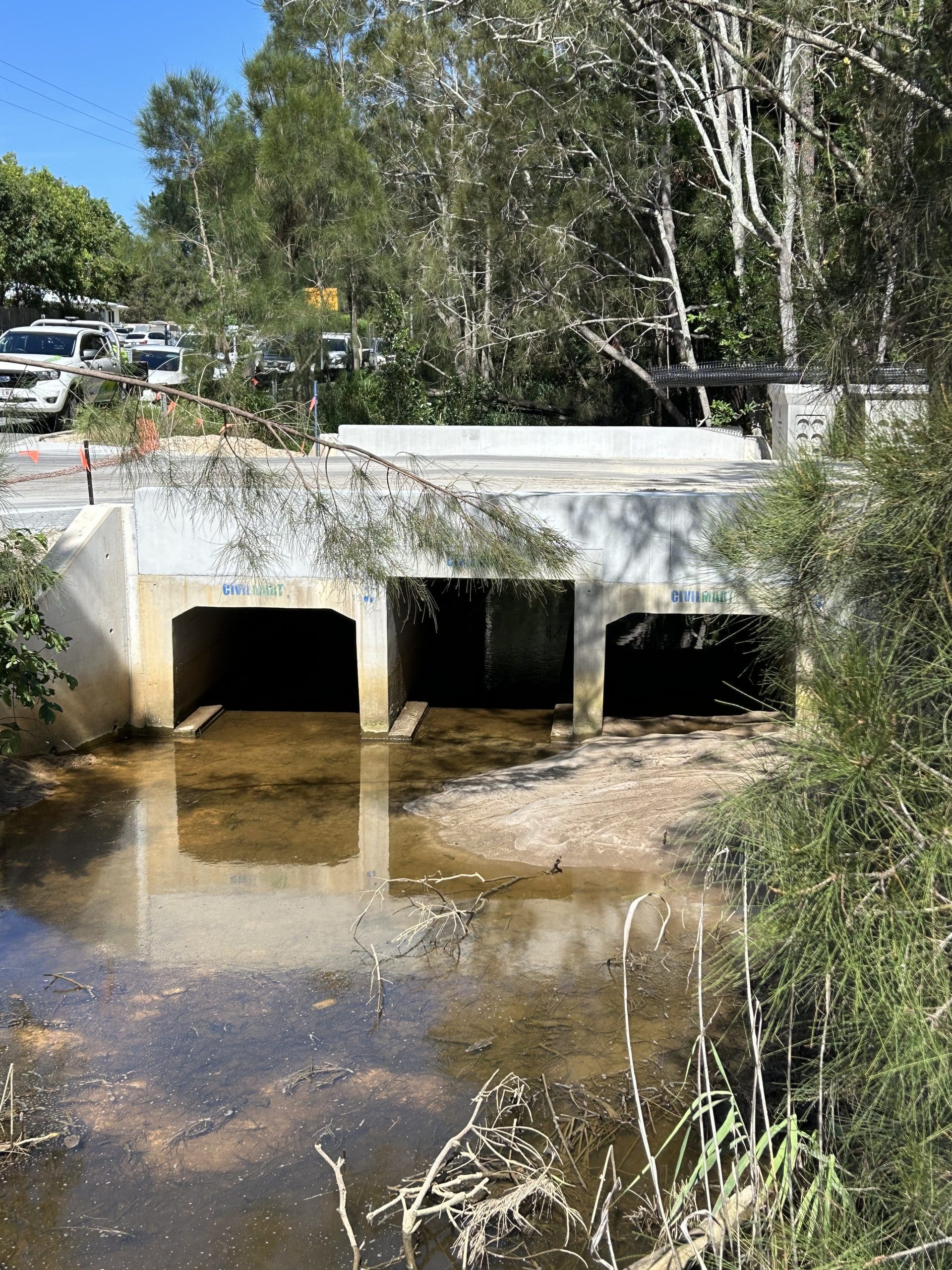Installing a stormwater drainage grate may seem straightforward but it can be complicated by various factors that will impact the type of grate you choose. In this blog post, we cover the 5 most important factors to consider when choosing stormwater drain grates, namely:
- Load rating and weight capacity
- Grate design and water flow capacity
- Safety and accessibility
- Landscape integration
- Environmental impact and water resource management
Why Choosing The Right Stormwater Drainage Grate Matters
Choosing the right drain grate for the job at hand matters because:
- The wrong Grate Type (as per AS3996: 2019) may not stand up to the traffic volume (vehicular and pedestrian) passing over it.
- An inadequate drain grate can lead to flooding because it can’t cope with the volume of surface water from surrounding surfaces.
- The wrong type of drain grate might allow leaves and other debris to accumulate, causing blockages and overflow.
- An unstable or inadequate storm gate poses a safety hazard for pedestrians and vehicles.
- A grate that can’t be easily accessed for maintenance and repairs may be skipped during scheduled maintenance, leading to increased risk of failure, and unnoticed deterioration.
- A cheap, inferior drain grate often results in frequent maintenance, ongoing repairs, or the need for constant replacements.
- Grates that stand out in the landscape can devalue the aesthetic quality of an environment.
- Inadequate storm grates can have adverse environmental impacts and negatively impact water resource management by contributing to flooding, erosion, and the presence of excessive debris in stormwater systems.
Now let’s discuss our 5 factors to consider when choosing a stormwater drainage grate.
1. Load Rating And Weight Capacity
Load rating and weight capacity directly affect the grate’s strength, and how it will withstand pedestrian and vehicle traffic. Choosing one with the correct load rating will ensure its long-term safety and durability.
What Is Load Rating and Weight Capacity?
Load rating refers to the maximum load or force – static and dynamic – the stormwater grate can withstand without deforming or failing. Weight capacity refers to the maximum static load the grate can withstand without failing. Australian Standard AS3996: 2019 sets out the requirements for stormwater drain grate class load ratings.
For example, a Type A grate is typically used for low-load bearing areas, such as footpaths and cycle ways accessible only by pedestrians and pedal cyclists. The maximum wheel load for a Type A grate is 330kg. At the other end of the scale, a Type G grate is required for airport runways, heavy duty docking bays and so on, where wheel loads are up to 30,000kg.
Most standard storm grates fall into Types A to D.
Drain Grate Load Rating Considerations
The grate must be able to stand up to the weight and load distribution of traffic (pedestrian and vehicle) passing over the top of it. To calculate the required load rating:
- Determine the intended usage and type of traffic.
- Identify the material and design of the grate.
- Consider load distribution across the grate.
- Estimate the total applied load from vehicles, equipment, and pedestrians.
- Apply safety factors (typically 1.5 to 3) to account for unexpected loads.
- Perform your calculations considering material properties and safety margins.
- Ensure the calculated load rating on the grate meets or exceeds relevant industry standards and regulations.
Drain Grate Weight Capacity Considerations
The manufacturer usually specifies the grate’s weight capacity ratings based on its design, material properties, and intended use. These ratings take into consideration factors like load distribution, support surroundings, safety margins, and material strength.
Always ensure the storm grate you use complies with the ratings set out by AS3996: 2019 for the environment in which it will be located.
2. Grate Design And Water Flow Capacity
Grate design and water flow capacity determine how well the grate resists clogging plus its drainage capabilities. Choosing one with the right design and water flow capacity for the conditions reduces blockages and ensures effective water management.
Grate Design Considerations
Strength and durability – The grate must have the capacity to withstand flowing water and debris, and resist corrosion and normal wear and tear. Grates made from corrosion-resistant materials such as hot-dipped galvanise steel, and with added design features like ribbing and reinforcement, contribute to grate durability and strength.
Safety – The grate design must prioritise pedestrian and vehicle safety. This includes a slip-resistant surface and smooth transition between the grate and its surrounds. These stormwater drain grates, for example, are bicycle-safe, pedestrian safe, and rated to withstand the relevant vehicle traffic conditions.
Compliance with standards – Whatever type of grate you choose, it must comply with AS3996: 2019 with respect to its intended use. You can’t for example use a Type A stormwater grate in a location that requires a Type B grate. Making sure the grate complies with set standards ensures it meets the performance and safety guidelines for its intended application.
Environmental considerations – The environmental aspects of storm grate installation include considerations like potential habitat disruption and water contamination. Storm grates made from environmentally friendly materials or with features that improve water quality can significantly reduce their environmental impact.
Water Flow Capacity
Hydraulic performance – The design of the grate must allow efficient water flow to avoid pooling or flooding. This means minimal water flow resistance and the capacity to effectively handle the volume of water expected to flow through it.
Open area ratio – To handle the anticipated water flow, the total area of the openings in the grate must be at the correct ratio relative to the overall size of the grate. For example, not enough holes or holes that are too small for the volume of water will restrict its flow capacity, resulting in pooling and flooding. At the same time, the holes must still capture debris in the water stream.
Anti-clogging features – As debris flows against the grate it can accumulate, clogging and blocking the drain. Therefore, effective stormwater drain grates incorporate design features that prevent or reduce this. They may have a sloped surface that pushes debris to the bottom while allowing water flow above it. Or it may have a hinged insert that can be quickly opened and cleaned.
3. Accessibility And Safety
Safety and accessibility features determine compliance with pedestrian and vehicle traffic safety standards**, and how easily the grate can be accessed for crucial maintenance and repairs. The selected grate should not only comply with the relevant safety standards for its category but also allow easy maintenance and repairs.
**Note: All storm grate designs for use in public areas must comply with relevant Australian standards and regulations governing accessibility and safety, including for people with disabilities.
Accessibility Considerations
Maintenance accessibility – Grates must be easy to access for cleaning and maintenance. Design features to consider here include:
- Features that make it easy to remove and replace the grate,
- Features that allow access to the drainage channels underneath, or behind, it i.e. hinged grates with locks allow easy access whilst also preventing unauthorised access.
Safety Considerations
Pedestrian safety – In addition to load and weight bearing considerations, storm grate design also needs to incorporate pedestrian safety. They should therefore:
- Be slip-resistant (these raw grates for example have an anti-slip surface),
- Not have sharp edges to prevent cuts and scratches,
- Smoothly transition with the surrounding surface to reduce tripping,
- Have an appropriate and safe gradient,
- Incorporate anti-trap features that stop people getting fingers, various other body parts, and shoes, wedged in them. Consider special Heelguard grates and covers, or grates with thin, narrow openings, or angled / overlapping bars.
Visual contrast – Enhanced grate visibility helps pedestrians, particularly those with impaired vision, easily see, and identify, storm grates in footpaths and roads. Consider grates and grate surrounds in contrasting colours or textures that distinguish them from surrounding surfaces.
Vehicle safety – We talked about load rating and weight capacity above but these are also safety features. Storm grates in areas accessible to vehicles – roads, parking areas, loading bays etc – must be designed to safely support the expected weight load without failing or deforming.
Durability – Select storm grates made from materials that can withstand a range of environmental conditions, and the wear and tear of vehicle and pedestrian traffic. This will help reduce maintenance costs and improve longevity.
4. Landscape Integration
Landscape integration considerations decide how the grate should integrate into the surrounding environment whilst retaining functionality. To do this effectively requires consideration of visual appearance, environmental impact, functionality, and placement in terms of natural drainage and vegetation compatibility.
Aesthetic compatibility – Select a stormwater grate design that fits into the surrounding landscape, creating an aesthetically pleasing appearance. This involves colour, texture, and overall visual appearance considerations.
Environmental impact – Storm water grates play a pivotal role in stormwater management systems by reducing the impact of flooding on surrounding environments. To ensure they do this correctly, consider their:
- Water flow capacity,
- Water quality maintenance,
- Level of habitat disturbance, and
- Impact on ecosystem health.
Vegetation and landscaping – Stormwater grates should be integrated into the landscape with minimal disturbance to existing vegetation and landscaping features, and with the aim of preserving the natural environment.
Drainage patterns – Similarly, successful integration of drainage grates requires an understanding of the natural drainage patterns in the surrounding environment, and how to place them to optimise water flow and minimise flooding and erosion.
Regulatory compliance – Local councils have bylaws and regulations that govern the location and integration of stormwater drainage grates into the landscape. Understanding and adhering to these is a must.
5. Sustainable Stormwater Management
Environmental impact and water resource management considerations address how the grate will contribute to improved water resource use and help address environmental concerns.
Stormwater grates are the entry points into stormwater management systems. As such, they play a major role in ensuring these systems are not only sustainable but also:
- Minimise adverse environmental impacts,
- Maintain water quality,
- Control waste water flow volumes, and
- Protect infrastructure.
Environmental Impact – Choose stormwater grates that effectively control erosion and pollution whilst minimising habitat destruction and promoting ecosystem health.
Water Quality – Fit-for-purpose stormwater grates play a critical role in helping ensure the stormwater that enters our groundwater and natural water systems is clear of foreign nutrients, sediments, chemicals, and other pollutants.
Quantity Control – Effective stormwater management is also about managing the quantity of stormwater runoff. When this is done effectively with adequate stormwater grates and associated infrastructure it helps prevent flooding, soil erosion, and infrastructure damage.
Why Choose Civilmart for Your Stormwater Drainage Grates
With almost 800 years of combined industry experience, Civilmart are market leaders in stormwater drain grate supplies and concrete drain grate surrounds. You are sure to find exactly the right type of grate for your requirements from our comprehensive range of stormwater drain grates. Contact our experienced stormwater management team and make sure you choose the right stormwater drainage grate.
Join the Civilmart family
Stay up to date with latest product releases, newest industry innovations and more!


